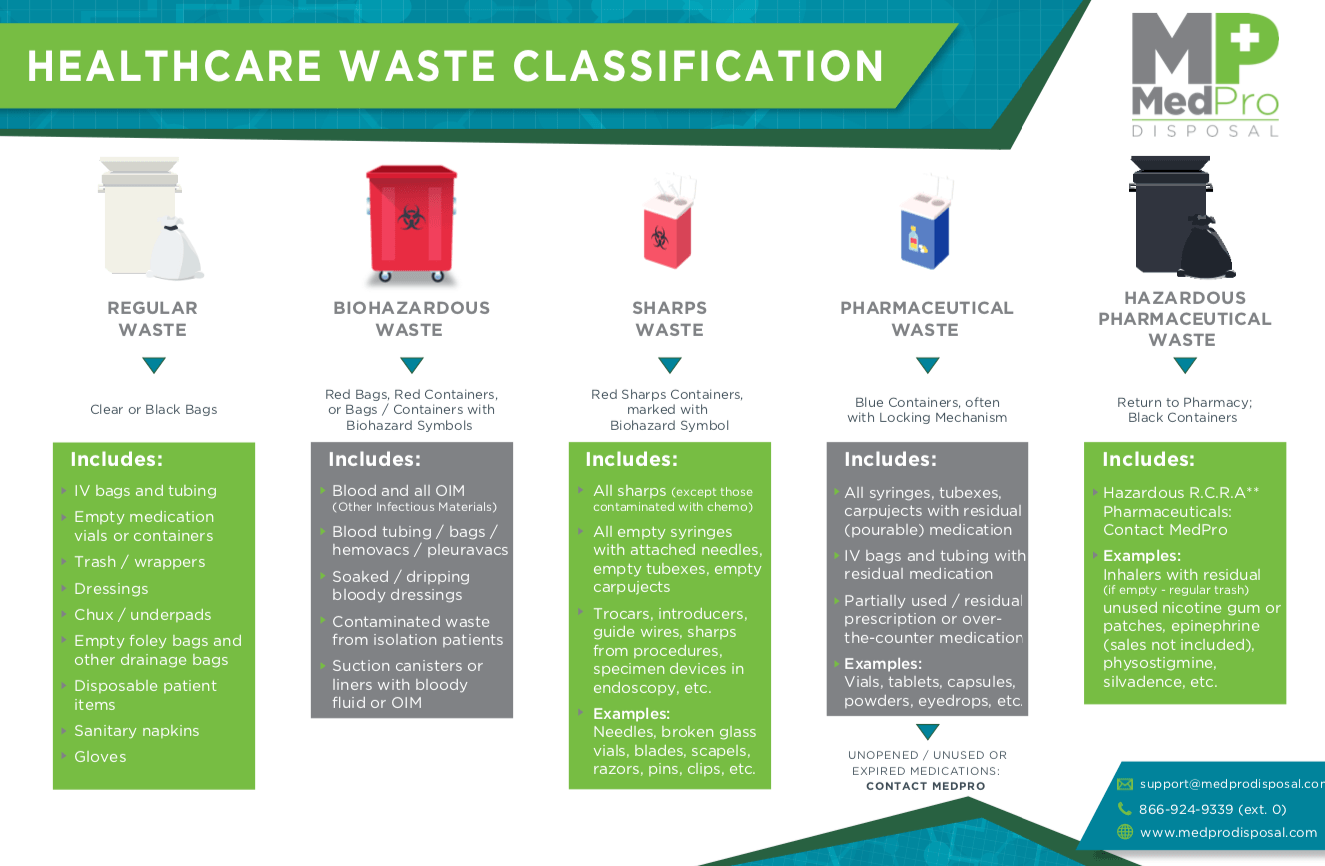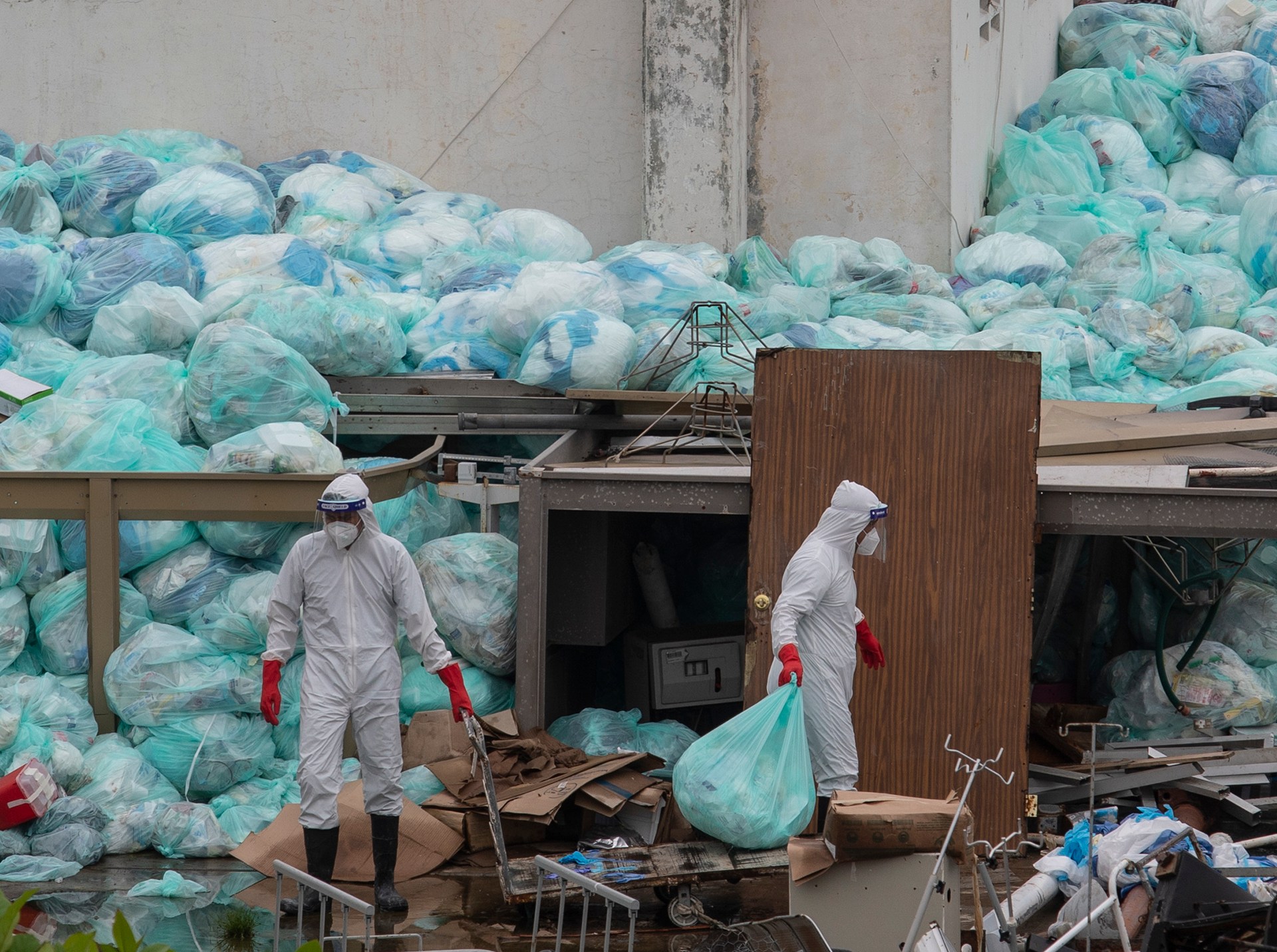Browsing Security: The Necessary Guide to Medical Waste Disposal Ideal Practices
Browsing Security: The Necessary Guide to Medical Waste Disposal Ideal Practices
Blog Article
Comprehending the Different Kinds of Waste Disposal Methods
In the realm of waste administration, the array of disposal strategies offered today is large and varied, each approach serving a distinct objective in dealing with the difficulty of garbage disposal. click here. From recycling techniques that intend to give new life to products, to the detailed processes of contaminated materials management, the landscape of waste disposal is complicated yet critical for environmental sustainability. Recognizing the nuances of these various methods not only clarifies the value of responsible waste management yet also motivates us to rethink our strategy in the direction of waste disposal in a swiftly evolving globe

Recycling Techniques
Reusing techniques are critical for lasting waste administration techniques in both household and industrial settings. medical waste removal. By applying effective recycling methods, a considerable quantity of waste can be drawn away from landfills, saving all-natural resources and minimizing the ecological impact of manufacturing procedures
In houses, curbside recycling programs play an essential function in encouraging homes to different recyclable products from basic waste. Materials such as paper, plastics, glass, and metals can be sorted and accumulated for handling into brand-new items, minimizing the requirement for basic materials and energy-intensive manufacturing processes.
Industrial facilities also count on reusing techniques to minimize waste generation and advertise a round economic situation. By carrying out closed-loop systems, companies can reuse products within their production procedures, reducing costs and ecological footprint. medical waste removal. In addition, commercial recycling programs commonly include partnerships with specialized recycling facilities to guarantee that products are appropriately arranged, processed, and rehabilitated into the supply chain
Composting Techniques

Oxygenated static heap composting includes mixing natural waste products in a large pile and frequently transforming it to make sure proper oygenation. This method is efficient for massive composting operations. On the various other hand, vermicomposting utilizes earthworms to break down natural matter into nutrient-rich castings. This method is appropriate for smaller-scale operations and households.
In-vessel composting involves placing natural waste in a shut container with regulated conditions for temperature level and oygenation. Windrow composting consists of creating long rows of natural waste and frequently transforming them to advertise decay - medical waste removal service.
Landfill Disposal
Land fill disposal is a commonly used method for handling waste that can not be reused or composted. Methane gas, a result of breaking down natural waste in land fills, is commonly accumulated and made use of as a source of renewable energy. Initiatives to lower dependence on landfills include promoting waste why not look here decrease, recycling, and discovering alternative waste disposal approaches to lessen the environmental footprint linked with traditional garbage dump disposal practices.

Waste-to-Energy Incineration
Incineration of waste for energy generation is an approach significantly being taken into consideration as a choice to traditional garbage dump disposal techniques. Waste-to-energy incineration involves the combustion of waste products at heats, usually in specialized facilities created to generate electrical energy or heat via the procedure - click here. This technique not only decreases the volume of waste that would or else be destined for garbage dumps yet also uses the heat created during incineration to develop power
Among the key advantages of waste-to-energy incineration is its capability to create electricity while reducing the environmental effect contrasted to standard landfill disposal methods. By converting waste into energy, this method assists in minimizing greenhouse gas exhausts and dependence on fossil gas for power generation. Additionally, waste-to-energy facilities are equipped with advanced air pollution control technologies to reduce prospective toxic wastes released during the combustion process.
Hazardous Waste Management

Thinking about the critical significance of liable waste administration practices, specifically in the realm of environmental sustainability, the focus now changes in the direction of the complex domain of Hazardous Waste Monitoring. Contaminated materials positions significant threats to both human health and wellness and the environment, demanding specific handling and disposal techniques. Usual examples of hazardous waste consist of chemicals, batteries, pesticides, and digital waste.
Contaminated materials Management entails the identification, collection, transport, treatment, and disposal of products considered hazardous or possibly harmful. This procedure requires adherence to rigorous policies and guidelines to alleviate adverse influence on communities and public wellness. Various approaches are employed in taking care of contaminated materials, consisting of recycling, secure garbage dumps, encapsulation, and chemical therapy.
Proper Harmful Waste Management is important for preventing contamination of soil, water resources, and air contamination. It is vital for sectors, laboratories, health care centers, and various other generators of contaminated materials to carry out durable management techniques, training programs, and emergency situation feedback plans to guarantee the risk-free handling and disposal of these products. Failing to manage dangerous waste properly can have far-ranging consequences, underscoring the significance of thorough and liable practices in this field.
Final Thought
In final thought, waste disposal strategies play an important role in handling and decreasing the influence of waste on the atmosphere. It is essential for individuals and industries to understand the various waste disposal strategies readily available and choose the most suitable approach for lasting waste management.
In the world of waste administration, the range of disposal techniques readily available today is huge and varied, each approach serving a distinct objective in attending to the challenge of waste disposal. click here. From reusing techniques that aim to offer brand-new life to materials, to the detailed procedures of dangerous waste management, the landscape of waste disposal is intricate yet vital for environmental sustainability. Understanding the subtleties of these different strategies not only loses light on the value of accountable waste monitoring however also prompts us to reassess our method in the direction of waste disposal in a quickly evolving globe
Efforts to minimize reliance on land fills include advertising waste reduction, reusing, and exploring alternate waste disposal approaches to lessen the environmental footprint linked with conventional land fill disposal practices.
It is crucial for sectors and individuals to recognize the different waste disposal methods readily available and choose the most ideal method for sustainable waste monitoring.
Report this page